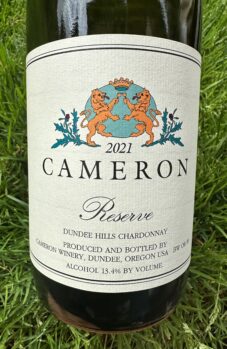From La Poubelle (1990)Cover | 1 | 2 | 3 | 4 | 5 | 6
A Debate Revisited
The debate has long raged in France regarding the quality of “pre-phylloxera” versus “postphylloxera” wines. Many of those individuals lucky enough to have lives which spanned both eras argued forcefully that the earlier wines were better. One cannot separate nostalgia from fact here, especially with a commodity as subjective as wine. However, you now have a rare opportunity in history to become one of the doddering old fools capable of arguing the merits of pre versus post-phylloxera wines! The pesky little root louse has come to Oregon and, more specifically, to the Dundee Hills. Since they earn their keep by munching on grape vine roots, particularly those of the European variety Vitis vinifera, they are not well loved by the vigneron. As they consume the root system of the vine, it slowly weakens and dies.
The phylloxera root louse took a rather circuitous “route” to reach Oregon. Indigenous to the East Coast of the United States and unknown west of the Rockies, it first appeared in France in the 1860s. Most parents believe that it got to France in some kid’s hair. This notion, while serious and creative, rarely finds its way to print. This is because people who write books about wine don’t have kids (people who have kids are too busy drinking the stuff to bother writing about it). At any rate, the people who research and write about this stuff contend that phylloxera hitched a ride aboard rooted-plants of American grapes which found their way to a botanical garden in southern France. Within two decades, most of the vineyards in France were infected or dead (and those of Italy and Germany were not far behind). Shortly thereafter, it hitched a ride again on rooted cuttings to California (I suspect not aboard a Havana steamer since Panama was yet only another French nightmare of the times). In California, the louse spread more slowly though it did eventually infect many vineyards and caused devastation to the California wine industry. The difference in habit between showed up in California and what showed up in France was critical; in Europe, phylloxera was a jet-setter coming out of the Mediterranean clime-it included a winged form as part of its life cycle and so was able to spread with devastating efficiency. In the Golden State, naturally it became laid-back and mellow and the winged form never materialized. Spread of the insect in the latter case requires movement of soil (via farm implements or perhaps a person’s boot).
To save the vineyards of both Europe and California required some quick, applied science (is this exciting, or what?). Monsieur Gaston Bazille suggested to a Congress in Beaune that the European species of grape could probably be grafted onto an American species which would be resistant to the disease; (to quote M. Bazille: “Savez-vous planter les choux, A la mode, A la mode?”). The American species of grape evolved on the Eastern North American continent in peaceful coexistence with phylloxera.
Thus its roots are resistance to the bugs and today serve as the rooted portion of nearly every vine in Europe as well as in most vineyards in California. This brilliant idea is rarely and barely mentioned in most botanical texts and yet it literally saved the vignerons from slipping into hybrid oblivion.
When the Oregon wine industry formed in the 1960s and 70s, California seemed a long way away. Furthermore, not only had Pinot noir and other European grape varieties never been tried here, but it was unknown which rootstock might work best on our soils. In addition, the expense of starting a vineyard on rootstock versus on its own roots was considerable (is this a great piece of rationalization, or what?). How phylloxera got here is anybody’s guess. It could literally be as simple as mud on somebody’s boot, a walk in the vineyard and “Voila-la bete mechante dans la terre!” Though the bug moves relatively slowly, the chances are slim that many of the original vineyards in Oregon will reach a ripe, old age before needing to be replaced with vines grafted on rootstock. Therefore, returning to the introductory tenet on this subject: you will now be in the position of boring your friends with the “pre-” versus “post-” phylloxera wine debate! However, I would recommend that you invest heavily now in prephylloxera Oregon wine so that you may speak with authority when the hot debate begins!
Begin by selecting a morsel below or from the sandy column just to the right -->
Recent Newsletters
Cameron Swimsuit Issue! (2023)
Last summer, I received a call from Sports Inebriated Magazine, and now histoire has been made …
There’s More... >Cameron makes it big (2021)
[our November 2021 e-newsletter]
Dear Cameron Winery Enthusiast,
You know how important marketing is to a winery. We certainly do, as you can tell from the flood of one newsletter we create every year (psst: […]
There’s More... >The Cave of Fermented Dreams (2019)
In a not-so-remote valley in Northern Oregon, four intrepid explorers discovered a hidden treasure…
There’s More... >

